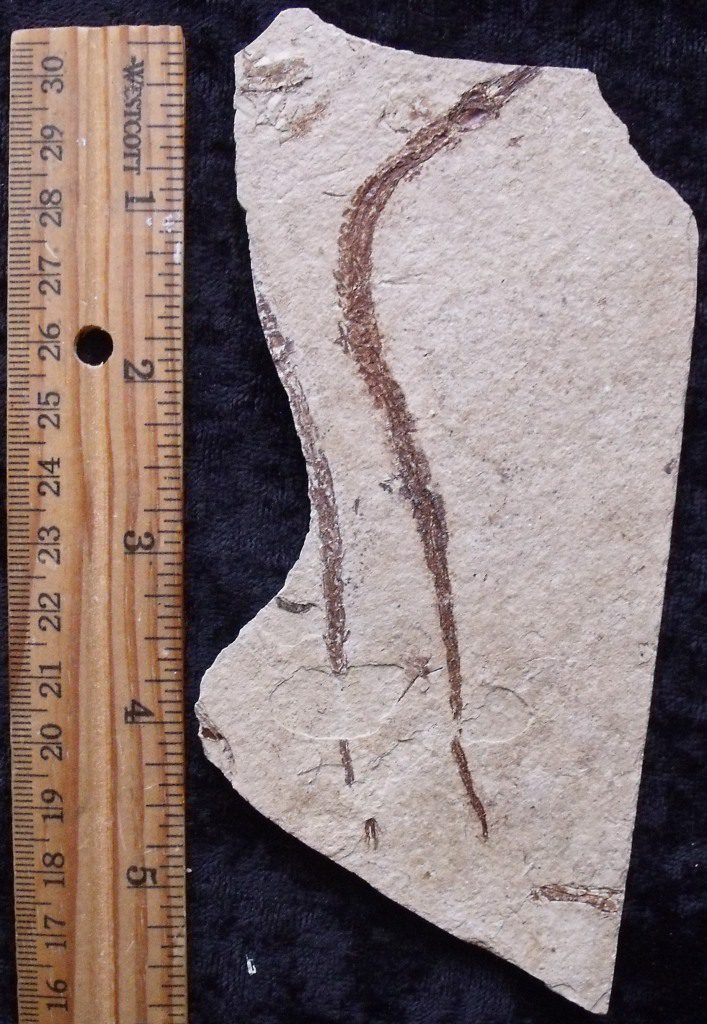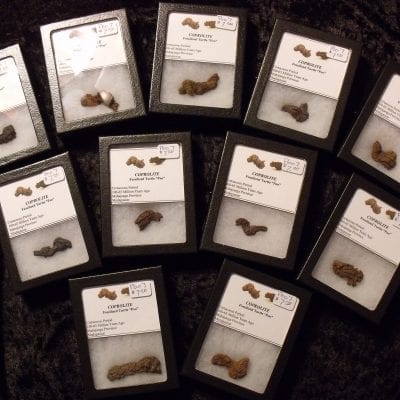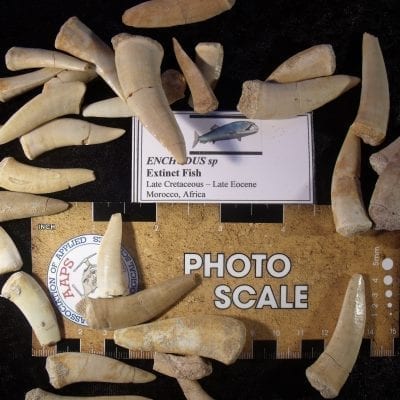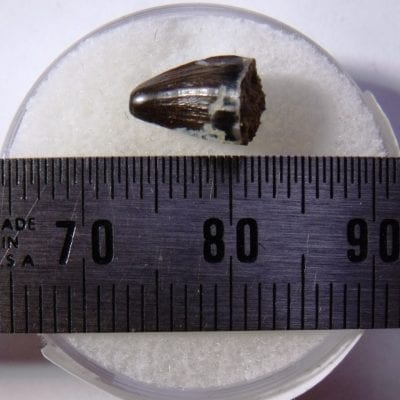Description
Rare Fossil from California Miocene Deposits
This is a Fossil Pipefish which is the common name. It is the common name because of their long thin shape.
This stunning specimen of a Detailed Fossil Pipefish Block and it shows off the beautiful biology of the prehistoric fish. This is a great example of this rarely-offered fossil. This one is 4 3/4 inches around the curve. And it sits on a irregular matrix 2 1/2 by 5 1/2.
The Pipefish family is characterized by the elongated snouts and dermal armor. They have a slender, elongated body with ring-like exoskeletal armored bands, a long tail, tube-like snout. But they do have small gill openings and are known to swim in a vertical motion.
All pipefish species have at least a dorsal fin that serves as their way to get around–some also have caudal fins or prehensile tails. In general, they are fairly weak swimmers in open water and reside closer to the seafloor.
The ancestors to today’s seahorses and pipefish date back to the Oligocene, roughly 30 million years ago. As this specimen shows, their appearance has changed very little over millions of years as indicated by their fossil remains. Tubular mouths suggest they fed on small crustaceans like their modern relatives.
Fossil pipefish are rare fossils to come by as they are only found in a handful of localities in Europe and in California. However this Detailed Fossil Pipefish Block specimen can be found throughout the Miocene shale and deposits of California. But they still are an extremely rare fossil to find. It is unusual because pipefish specimens have not been found in Lompoc shale the largest deposit of fossil fish in California. The fossils are often found in similar positions suggesting their remains were aligned by currents when fossilized.
Extinct Marine Pipefish
Monterey Formation
Late Miocene Age : 8 – 5 million years ago
Santa Barbara County, California, USA




